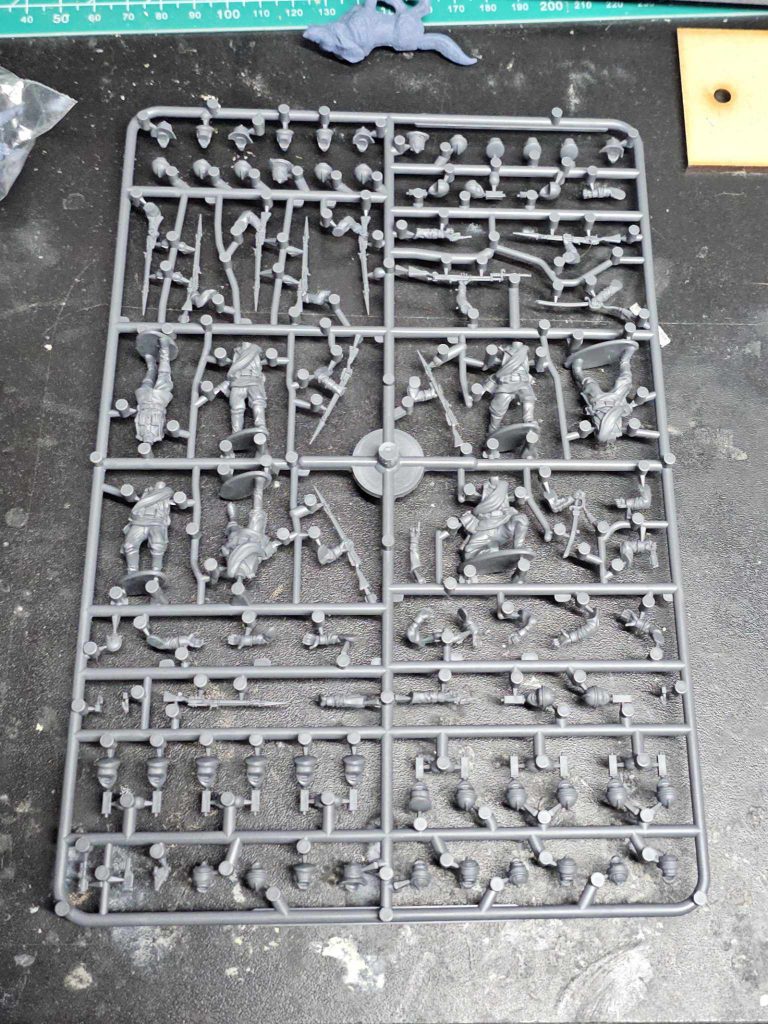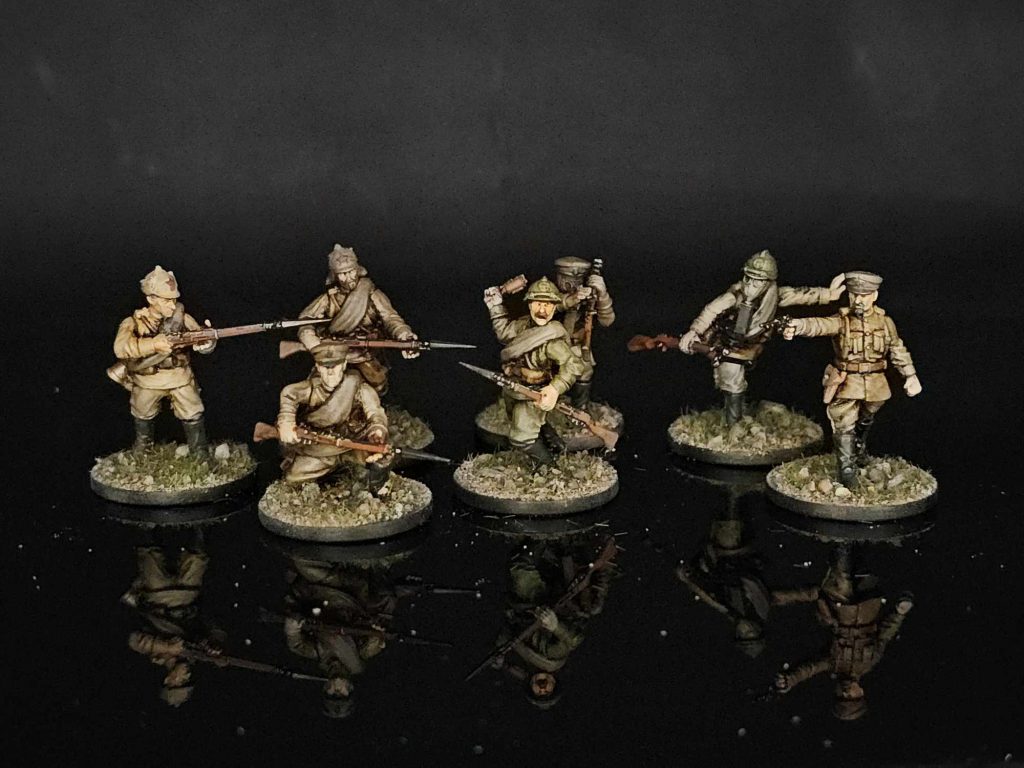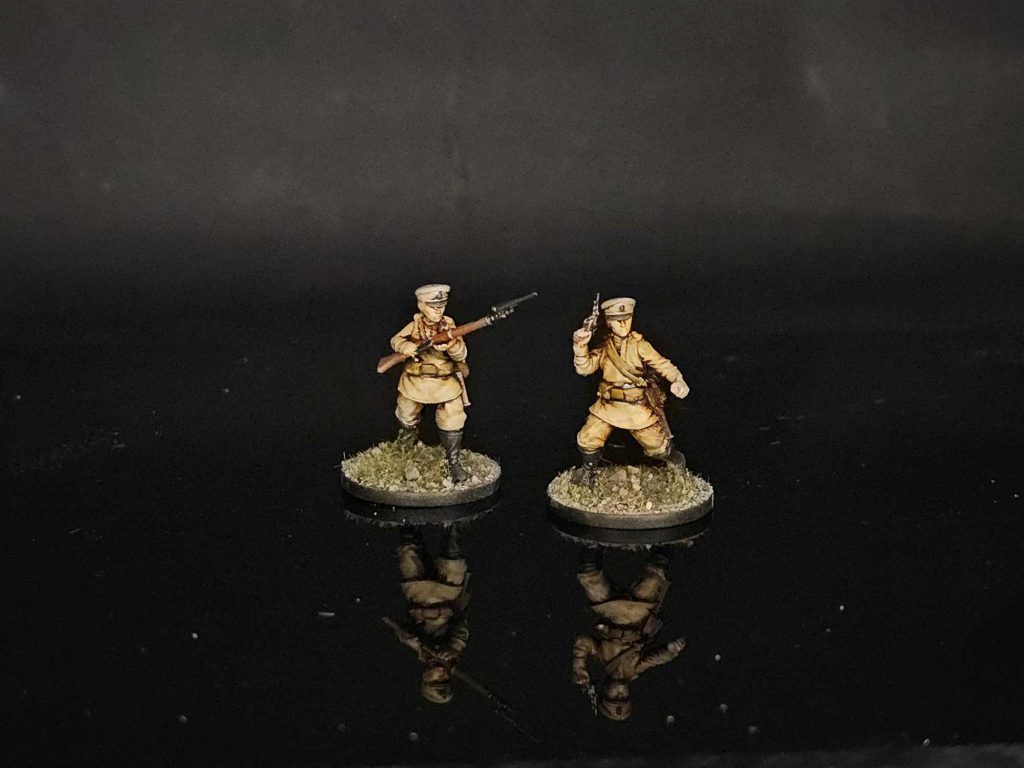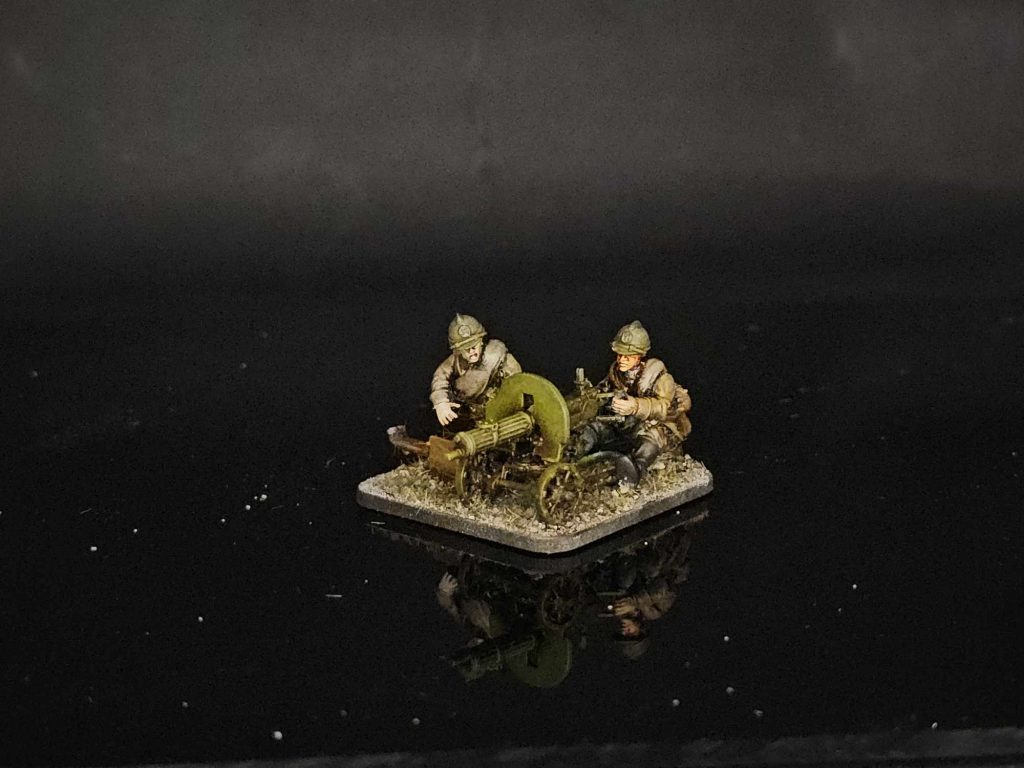Summer 2024 marks the 110th anniversary of the cataclysmic events that led to World War I. Despite being one of the most pivotal events of the 20th century, WWI has not achieved nearly as much representation on the tabletop as its sequel, and we at Goonhammer hope to shine a little light on this fascinating period of history.
Another day, another Wargames Atlantic historicals kit for the First World War! Don’t worry folks, we’re not likely to run out anytime soon (particularly not if we include the stuff being put out for printing on WGA Digital). This time we’re back to the mud and blood of the Great War, with WGA’s hard plastic Russian Infantry kit. Let’s dive in.
Thanks to Wargames Atlantic for sending these over for review.
What’s in the Box?

Each box contains five sprues, all identical. Each sprue is positively stuffed with bits, far more than needed to make the 35 infantrymen contained – this is expected for Wargames Atlantic at this point, but should still be called out, because it’s still cool! If you’re looking to fill your bits box for A War Transformed, WGA’s just announced The Last War, or just trying to kitbash one of the many other forces that used bits of Russian kit, you’re in the right place.
Each sprue has seven bodies – six with standard infantry equipment (most notably the iconic Russian greatcoat wrapped round the torso like a bedroll), and one with a more officer-like uniform. Also included are nine arms holding Mosin-Nagant rifles, one holding a Berdan II rifle, ten empty-handed arms, an arm with an officer’s sabre (in scabbard), an arm with a C96 Mauser, one with a Nagant M1895 revolver, and one with a Model 1914 hand grenade. There are a few equipment bits, like water pouches and gas masks doohickies. We also have heads galore, with at least a full seven for each variant, so you can build all 35 in the same style. Variants include: peaked caps (the most common uniform for WW1 Russian infantry), Adrian helmets (saw limited use after 1916 amongst Grenadiers and Death/Storm Battalions, otherwise unpopular), budenovka (the red-starred caps synonymous with the Red Army during the Russian Civil War), and gas masked heads with both peaked caps and adrian helmets, as well as a few bare headed gas mask heads. That’s for a total of 45 heads per sprue, or 225 per box. Wowzer.
Readers with a creepily good memory of our previous articles may recall our complaints (well, my complaints) that the French Infantry box had no instructions, making matching up arm sets a time consuming activity. Well, there’s still no instructions, but now each arm has a little letter and number moulded into sprue next to it (R3 and L3, for right and left). This is a welcome change, though you will still need to do a bit of work as not all the arm sets will fit all the bodies.
No issues with the casting quality. There are small mould lines that are mostly easy enough to remove without removing any detail.
How’re the Sculpts?

Good! The details are crisp, the models are detailed without being overly busy, and they paint up nicely. There are negatives – some arm and torso combinations don’t blend especially well, creating that action figure style shoulder gap. Also, although I’d overall rank the sculpt quality as higher than the French Infantry box, with crisper details and faces, it feels quite a bit less modular. Arms don’t mix and match as well, and creating naturalistic poses that don’t repeat is somewhat more challenging. It’s obviously still much better than if we were working with mono-pose metals, which is basically your only other option!
Conclusion
Easily your best option for modelling Great War and Russian Civil War infantry. Good value, at £25 for 35 miniatures, good quality, and lots of spare bits. I’m not quite as impressed as I was for the French Infantry box, but that one managed to span two wars, so perhaps that’s not entirely a fair comparison.
It’s worth noting that this is the best option in a very small pond, given how few decent Great War kits are actually around, but it still stands on its own as a perfectly cromulent miniatures kit. It’s not going to blow anyone’s mind, but it does the job and looks good.
How Do I Build/Paint My Platoon?
Good question. We’re not dealing with the sheer avalanche of variant equipment as we were with the French Infantry, but there’s still lots of bits and not any guidance on how it was actually used historically, so worth a quick rundown.
When choosing heads, know that the variants tend to place the model in a specific time, place, and unit. The peaked caps are standard dress, they’ll fit with basically any period or unit (including in both the Red and White armies during the Civil War). The Adrian helmets were imported from Europe from 1916 onwards to fill the gap while Russia tried to manufacture its own helmets. They were widely unpopular and were not used much, except by some Grenadier regiments and by the Death/Storm Battalions. The latter units were hastily formed in 1917 from civilian volunteers, including a couple of all female battalions (who saw no action aside from being some of the last defenders of the Winter Palace, and many former members later fought for both sides during the civil war). The gas masks also weren’t included in the standard infantry kit until 1915-16. The iconic budenovka was part of the Red Army uniform during the civil war, so shouldn’t be used if you’re intending to build your infantry for WW1.
As for painting – Russian uniforms were supposed to be olive green, and indeed at the start of the war most of them probably were (barring variations of colour that inevitably occur in historical uniform manufacturing). However, Russian uniforms faded something fierce after use in the field, so an infantryman’s uniform could be anything from textbook olive green to almost white! So pick your favourite shade somewhere on the spectrum between olive green, khaki and light beige, and well done, you’ve done a historically accurate paint job. Early war uniforms are likely to be darker, and late war/civil war uniforms more likely to be faded and worn, but honestly either extreme is fine for either period.
Brucie Bonus: Digital Russian Extras
Wargames Atlantic also has a 3D print wing, WGA Digital. Well, I have a printer, so I thought I’d print off some samples in their WW1 Russian range and give you my quick thoughts.
Women’s Death Battalion

Perfect for modelling the aforementioned women’s units, or mixing some women into your infantry squads for both WW1 and the civil war. Includes eight heads, five torsos, and various arm options. WGA also included a few pre-built models, all of which look rather nice and print well.
Russian Maxim HMG

The venerable Maxim was in use through WW1, the Civil War, and into WW2. No peaked caps in this set, which is a shame, but it does include budenovkas and Adrian helmets. While the sculpt is good, this doesn’t feel well configured for printing. The gun has a lot of little spindly bits that are very hard to avoid breaking, even with the durable resin mix I use. Just carefully removing the Maxim from its print supports resulted in a couple of breakages, requiring a reprint.
Russian Cossacks

Though labelled just as Cossacks, this set also includes peaked capped heads along with the more recognisably Cossack papakhas (and a gas masked papakha head, which is just cool). Definitely one of the better WGA Digital cavalry sets, and that’s mostly because it actually comes with horses! While overall I like their digital output, I think the choice to leave horses out of most of their cavalry sets isn’t a good move. But this one has horses, so hooray. Also has sabres for use with the Cossacks, and lances for the regular Russian cavalry. When painting, remember that Russian cavalry had dark blue trousers instead of the usual olive green/khaki ones, with a coloured stripe on the Cossack trousers to denote a specific unit.
If you’d like to pick up this Wargames Atlantic kit and support Goonhammer while you’re at it, get them through our affiliate link
Have any questions or feedback? Drop us a note in the comments below or email us at contact@goonhammer.com. Want articles like this linked in your inbox every Monday morning? Sign up for our newsletter. And don’t forget that you can support us on Patreon for backer rewards like early video content, Administratum access, an ad-free experience on our website and more.




